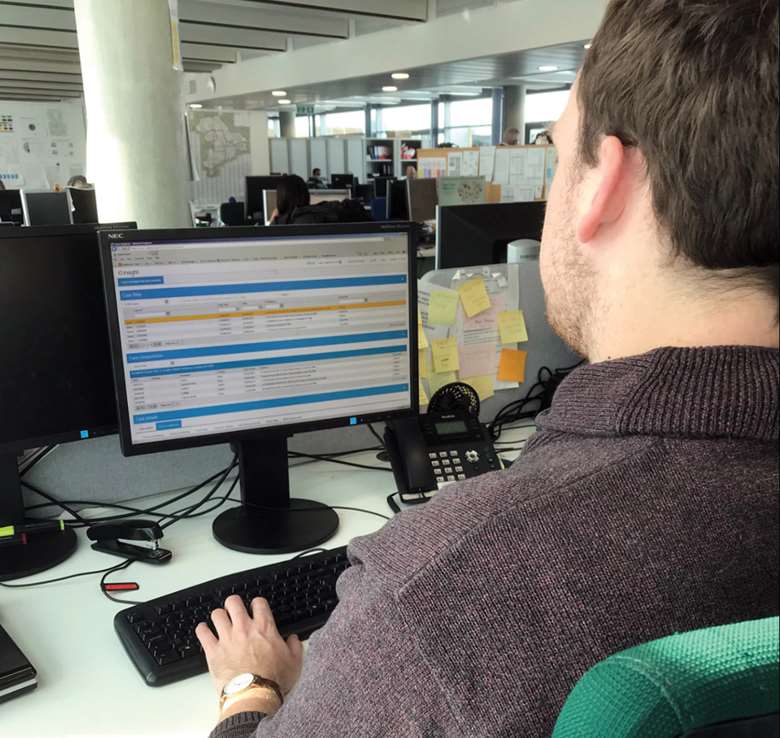Early Help Profiling System
Jo Stephenson
Tuesday, March 27, 2018
Uses advanced analytics to identify families at risk and provide detailed referrals to social care.

- Information is presented in clear "natural language" making it easier for social workers to understand and act upon
- Could save each council £1.3m per year through improved efficiency and early identification of problems
ACTION
Councils and other partners in health, education and the police hold a wealth of data on the families they serve yet sharing that data safely and making best use of it can be a challenge.
The Early Help Profiling System (EHPS), developed by Xantura, securely brings together information from multiple sources and uses predictive analytics to identify the most vulnerable children and families with the aim of ensuring they get timely support.
Development and testing of EHPS has been supported by the London Ventures innovation programme, a partnership between umbrella body London Councils and professional services firm EY. It is currently being trialled by Hackney, Southwark and Thurrock councils.
By using advanced modelling techniques EHPS provides the kind of sophisticated analysis that an individual agency or professional would struggle to do.
"Xantura will look at datasets from across the local authority, everything from council tax information to noise complaints, and bring in data on things like school attendance from education and other partners," explains Shu Fei Wong, manager at EY and delivery lead for London Ventures.
"They pull that all together and run risk models to identify those children or families potentially at risk of statutory intervention in the next six to nine months.
"That then generates a referral to the front door or multi-agency safeguarding hub (Mash) to say ‘we think you need to look at this child or family'."
By pulling together data from multiple sources the system is able to generate a comprehensive summary of a family's composition, background and any past issues or interventions.
"A social worker will have a very comprehensive summary of all the information that's available on that child or family as opposed to a very short one-line referral," says Wong.
"This saves massive amounts of time for researchers or social workers who might previously have spent weeks or months getting that information together."
Social care professionals can either receive EHPS alerts via an email that directs them to a secure portal where they can view the information or referrals go to the same place as other children's services referrals generated by the police, health, schools and others.
Crucially, this information is presented in an easy-to-interpret "natural language" narrative format that deliberately steers clear of providing anything akin to a risk score or traffic light rating.
"The problem with red, amber, green or even providing a score is it tends to say ‘this is what we think you should do'," explains Xantura chief executive Wajid Shafiq, who says EHPS is all about "smarter use" of existing data.
"Our natural language summaries say ‘we think this family is at risk, these are the reasons why, and now it is up to you to decide applying your own professional judgment'."
The system not only alerts social services to families that may not already be on their radar but also helps when it comes to prioritising cases and identifying those that can be stepped down.
When it comes to helping families avoid child in need or child protection status or children entering care then ultimately that will be down to the quality of interventions used, says Shafiq.
However, predictive analytics can provide social workers with information about the kind of interventions most likely to work with different groups.
"We can say things like ‘these sort of interventions don't tend to work particularly well for families as complex as this and this type of intervention is likely to be more effective'," says Shafiq.
That kind of information is also very useful for commissioners when it comes to looking at the risk profile of a population as a whole and working out what kind of services are needed, he adds.
IMPACT
Early findings suggest the system is helping to identify hundreds of families not previously known to children's services who need extra support.
For example, in Hackney EHPS has identified nearly 400 additional families to receive support through the local Troubled Families programme. Meanwhile, professionals from Hackney's Mash report that the system has reduced the time they need to spend processing and researching information by about 30 per cent.
Across all trial sites, around 80 per cent of referrals made through the system have resulted in further intervention - proof that the model is successfully identifying those in need, says Shafiq.
Those behind the project predict that earlier targeting of support could save a typical London borough at least £1.3m in efficiencies.




